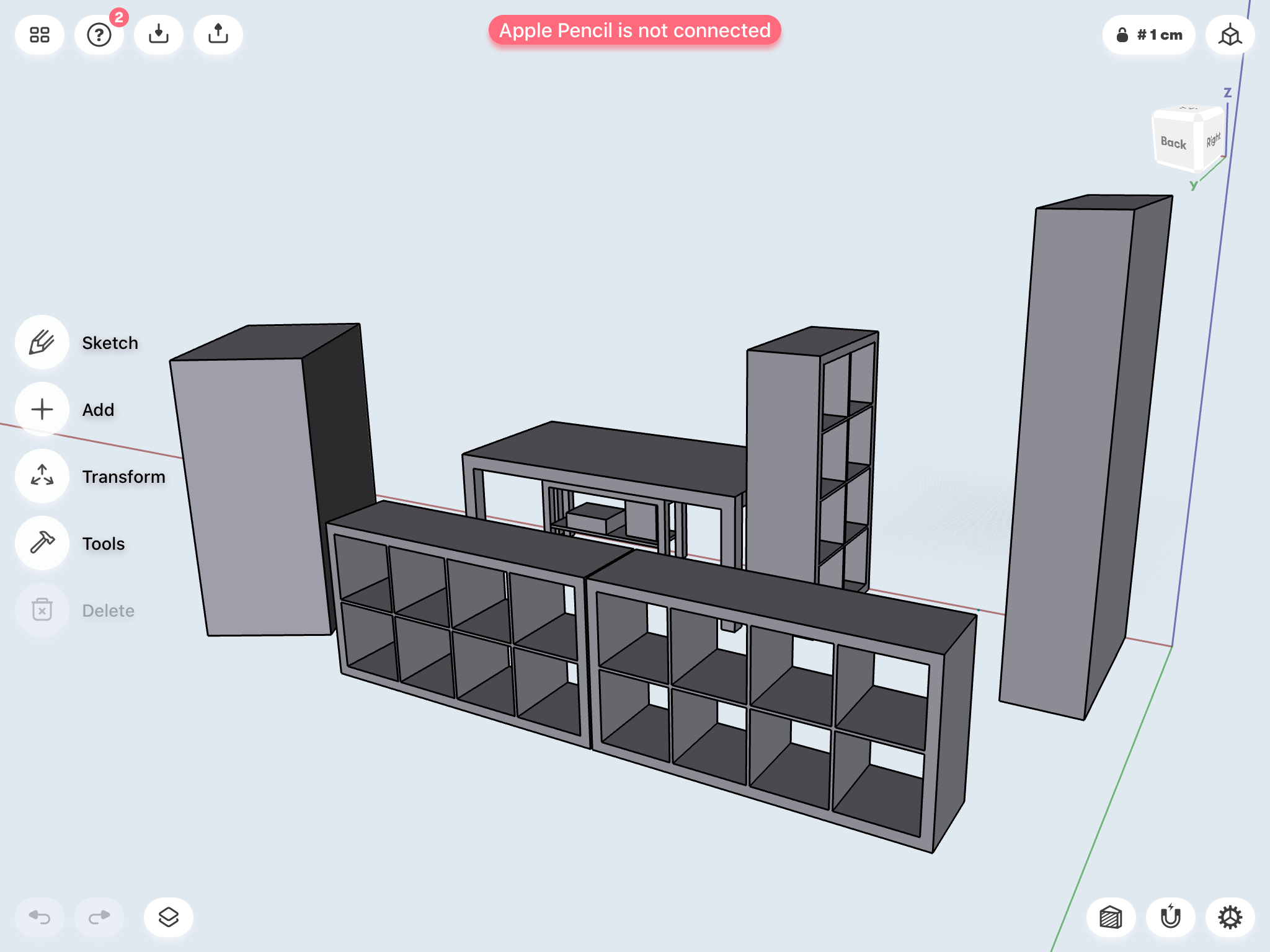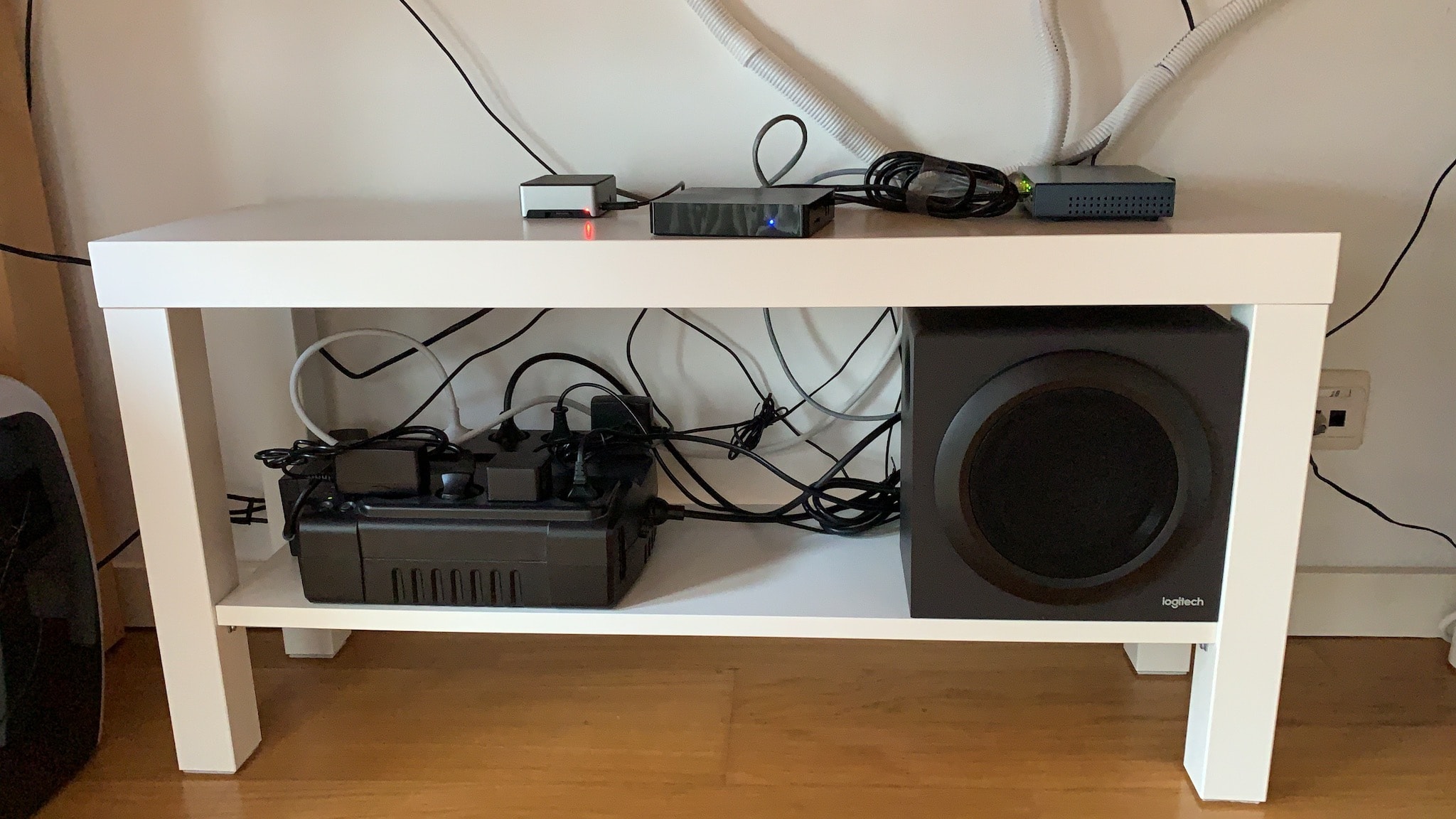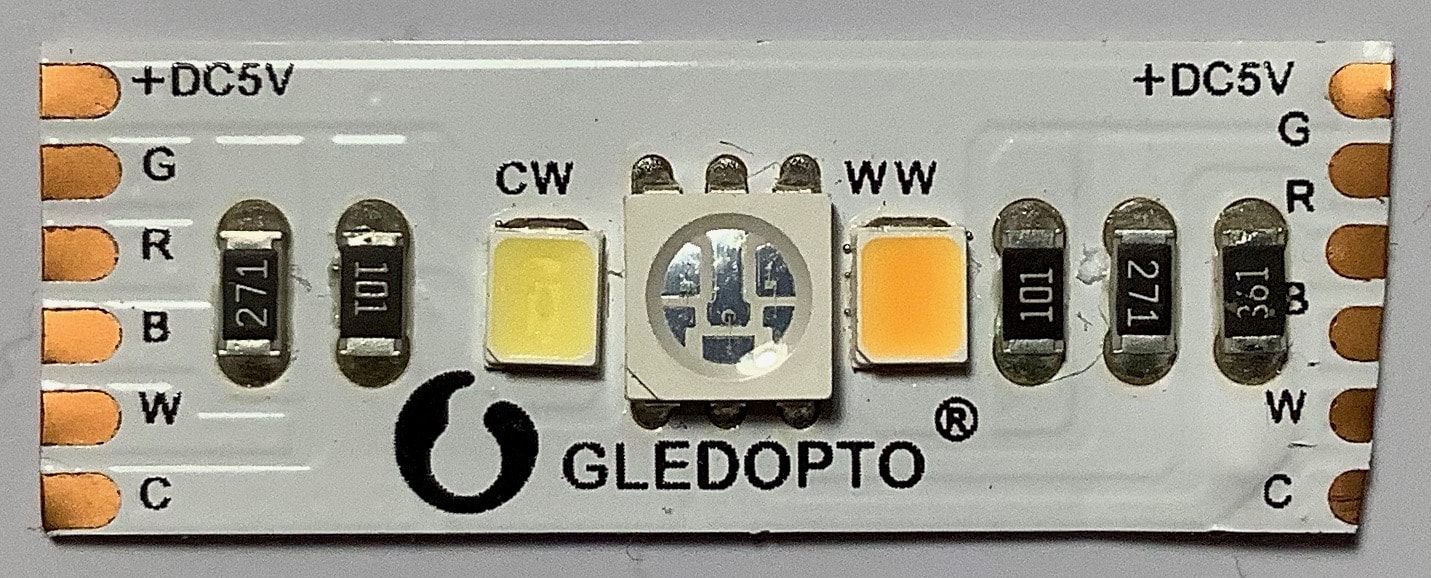I’m changing jobs. Still at Microsoft, but moving to Architecture and Industry Services and reporting to the Office of the CTO in EMEA, which is a long-winded way to say I’m now managing technical delivery–it’s not engineering, but too interesting to miss out on. I may (or not) write about that sometime, but it is a great opportunity for me and changes a lot of things.
The change I’m going to write about today is that I’m now “home office” based (at least when not traveling), which is why I spent Christmas break rebuilding my home office and turning it into a more welcoming place.
Even though I already worked from home up to a third of my time, there were some things that needed fixing, and yes, there was some IKEA hacking involved.
The Setup
I am back to my very first home desk (a broad, expansive and clear-cut 180x90cm dinner table that is still larger than anything IKEA has to offer), which is surrounded by a bunch of re-purposed KALLAX shelving units for storage and additional “desk”/countertop space:

This worked out reasonably well: I have plenty of elbow room, the long counter has room for my 3D printer and a few projects (like my Pi cluster and a bunch of my music gear), and I even managed to fit in a small sheltered nook with a comfy chair to read and “change gears”1 in that gap on the right.
And there is (barely) enough room for an exercise bike (the oblique box on the left), which I intend to use more often.
Sitting Desks Are Definitely Cheaper
Thanks to complex family trading rules (my desk served as a dinner table for the past few years, and two of the KALLAX were not needed anymore), none of it cost me a dime (which was excellent).
That was the main reason I didn’t go for a standing desk (the other being that I couldn’t find one that was anywhere as spacious and am somewhat skeptical of the concept, at least for now).
The only two things I bought were an IKEA LACK TV table (which holds all the networking and power gear) that I modded to have enough shelf height to hold the Logitech Z333 subwoofer and enough clearance to allow for easy vacuuming, and an IKEA SUSIG, which is a very nice (and temperature-neutral) desk protector made of ground cork2.

There is still some storage to re-arrange (there are a couple of large plastic boxes under the desk that really shouldn’t be there, but the thing is so wide and deep they are not a pressing concern) and I am still trying to figure out how I can set up a soldering station someplace, but right now it’s OK.
Lighting
Since I started doing this in Winter, I made sure I got plenty of light I could tweak: I replaced my desk lamp bulb with a tunable IKEA TRADFRI one and got a couple of GLEDOPTO Zigbee RGBW LED strips for indirect lighting.
I realize that LED strips might be considered the modern day equivalent of disco mirror balls, but I got these because they have both white and yellow LEDs besides the RGB one, so I can tune the ambient lighting to a low, warm yellow color, which makes the room “feel” warmer.

And yes, I can go all-out and get a TRON ambiance going if I feel like it, but so far the only use I found for the RGB LEDs is as a visual bell whenever there’s someone at the door.
Either way I’m still refining their handling by my home automation setup, which currently entails fiddling with color temperature gradients as the day goes by.
Time Management
A lot of people are biased either for or against remote work (and there are gigabytes of blog posts out there on the topic), but I’ve been doing it (on and off) for ages, and my current context affords a few extra benefits:
- The modern Microsoft runs on Teams: so much so that I often have to mute or close it to be able to focus, but physical meetings are, thankfully, relatively few and far between.
- I’ve always worked on Azure, which by itself renders location moot.
- I can pop over to the local office every now and then and work from there if I crave social interaction (although I tend to prefer using lunch breaks for that, just like when I worked in a traditional closed office).
But the key point here is that the trivial, but stupendously effective mind trick of dressing up just after 8AM and “leaving” for work the moment I step into this particular room works wonderfully for me, and I wholeheartedly recommend it.
The only serious drawbacks I’ve found so far are that:
- It’s hard to actually stop working. I’ve found myself working through lunchtime (and started taking forced breaks or having lunch on my way to customers). Some days I start winding down things as kids leave school and can supervise them, but on others I effectively work right up to dinnertime, so I might put in anything from 8 to 12 hours a day (especially if I need to finish something after dinner or get one of the typical Portuguese “panic calls” by six o’clock).
- I’ve wired myself for sitting down to do “regular” work at my desk so effectively that it now takes actual effort to actually relax and pursue what few hobbies I have in that setting, so I tend to lounge about in the living room on weekends.
So I resorted to another mind trick: I actually unplug my Surface and remove it from sight every Friday evening.
Seems to be working out OK so far…
-
I never found study at a desk to be comfortable, and taking my Surface away from the desk and flipping it to portrait mode forces a context switch that is more amenable to focus. ↩︎
-
This saves some discomfort when laying my forearms on a chilly desk early in Winter mornings or an uncomfortably warm one in Summer afternoons. ↩︎